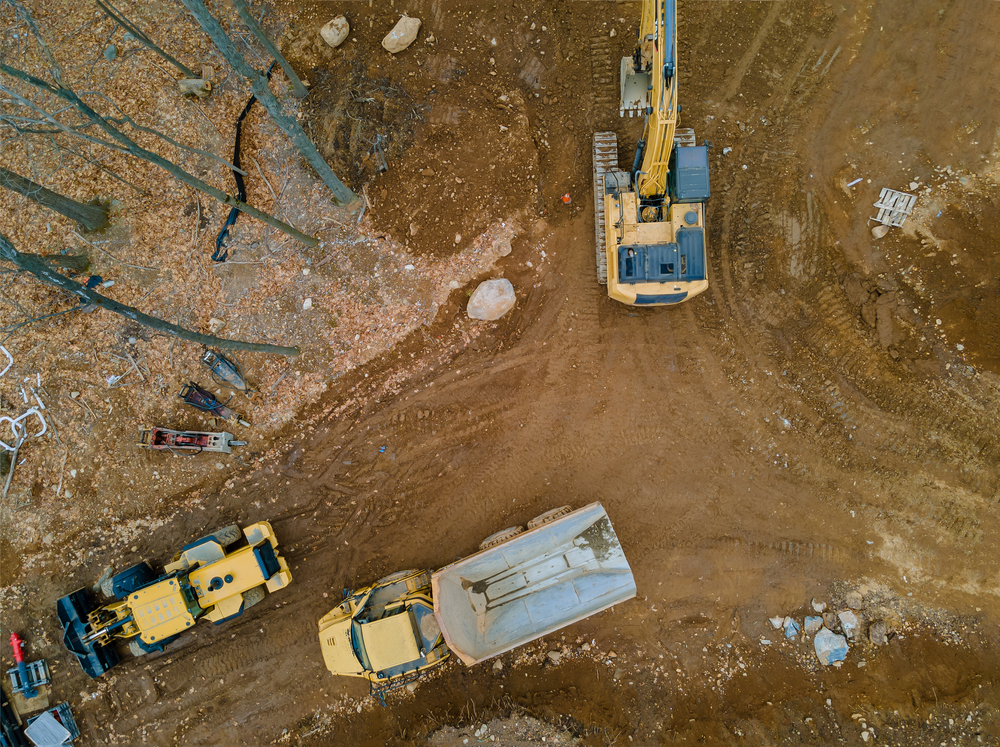
In geotechnical engineering, ground treatment is used to make the ground suitable for construction projects of all kinds on many types of soils. These techniques are aimed at increasing the bearing capacity, minimizing settlement and soil instability, and creating a firm foundation for buildings. Earth Engineering Incorporated (EEI) evaluates different ground improvement methods to provide innovative and effective solutions for challenging soil and site conditions. Here, we explore some of the principal ground improvement methods EEI uses to achieve structural integrity and safety.
Dynamic Deep Compaction (DDC) and Dynamic Replacement
Dynamic Deep Compaction (DDC) is a technique that uses a heavy weight repeatedly dropped from a significant height to compact loose soils. This method is especially effective in granular soils like sands and gravels, increasing density and reducing future settlement. Dynamic Replacement is similar but involves placing stone or other materials into the soil to create a denser, more stable layer when soil conditions do not support DDC alone. Both DDC and Dynamic Replacement enhance load-bearing capacity, making them highly effective for projects requiring ground remediation.
This approach is ideal for large areas or sites with deep loose layers, as it can penetrate depths beyond what conventional surface compaction methods can achieve. Through proper Laboratory Testing, engineers can determine the suitability of these techniques for a project, ensuring that the most effective method is employed for site-specific conditions.
Vibro-Compaction and Vibro-Replacement (Stone Columns)
For sites with loose sandy soils, Vibro-Compaction is a highly effective ground improvement method. This technique uses vibrating probes that are inserted into the soil to rearrange particles, increasing density and stability. The process improves the soil’s load-bearing capacity, which is crucial for supporting large structures.
When soils are made up mostly of fine-grained material, Vibro-Replacement (also known as Stone Columns) can be an effective approach. This procedure is the application of crushed rock into the ground through a vibrating probe. The stone substitutes a portion of the soil, forming columns that stabilize and drain, thus addressing settlement. Stone columns work best in sites with cohesive soils, such as clays and silts.

Controlled Modulus Columns (CMC)
Controlled Modulus Columns (CMC’s) are a novel ground improvement method that provides the advantages of pile and column support without resorting to typical deep foundations. Controlled Modulus Columns are built by pumping a steady stream of concrete or grout into the ground, forming a column that minimizes settlement and enhances bearing capacity. Controlled Modulus Columns piles are fast to install, compared with other piles, so they are economical.
A load transfer platform is constructed between the top of the CMC’s and the bottom of footings. THis ensures effective transfer of the foundation loads to the columns. The CMC’s are not structurally attached to the foundations for the structure.
This method is particularly beneficial for projects that demand minimal disruption, such as urban construction sites or sensitive areas where noise and vibrations need to be controlled. Controlled Modulus Columns are ideal for soft clay and silty soils, providing an enhanced foundation system that supports heavy loads. With EEI’s in-depth soil testing in Bucks County PA capabilities, clients can rest assured that the chosen ground improvement solution meets the project’s specific demands.
Grouting
Grouting is a versatile ground improvement technique that can be adapted to various soil types. This method involves injecting a specialized grout mixture into the ground to fill voids, seal fractures, or strengthen weak soil layers. It can be used for a range of purposes, from improving load-bearing capacity to reducing groundwater flow.
Permeation grouting, compaction grouting and jet grouting are examples of grouting methods, each designed for particular soil and project situations. Permeation grouting is usually applied to granular soils while compaction grouting suits cohesive soils. Jet grouting, however, is suited to high-strength work. The right grouting method is chosen through EEI’s expertise, which is adapted to the specific circumstances of each site.
Geosynthetics
Geosynthetics, such as geotextiles, geogrids, and geomembranes, are materials used in ground improvement to reinforce, stabilize, or protect soil. They are widely applied in projects involving roads, retaining walls, embankments, and basins/ponds. Geosynthetics can prevent soil erosion, improve drainage, and support load distribution, making them a valuable solution for challenging soil conditions.
Geosynthetics also improve the longevity of a project by protecting the soil layers from external elements and reducing maintenance needs. They are highly effective in both cohesive and non-cohesive soils and can be easily integrated into many different types of ground improvement plans.
Wick Drains
Wick drains, or prefabricated vertical drains, are an efficient solution for expediting the settlement process in clayey and silty soils. When used in combination with surcharging these drains create pathways that allow water trapped in the soil to escape more quickly, speeding up the consolidation process. By reducing the amount of time it takes for water to drain from the soil, wick drains help prevent future settlement issues, making them ideal for sites where a reduced settlement time is required.
The installation of wick drains is minimally invasive, making it suitable for both new construction sites and existing infrastructures where ground stability is critical. Clients can, with EEI’s history, rely on a holistic approach to site stabilization that involves soil testing and tailored advice.
Each of these ground improvement methods plays a crucial role in ensuring the success and stability of a construction project, particularly on sites with challenging soil conditions. Earth Engineering Incorporated’s skilled team can assess and recommend effective techniques based on extensive experience. Integral to these systems is effective quality control during construction Earth Engineering Incorporated’s experienced team can provide construction inspection in NJ, PA, and the surrounding region.
If you’re planning a project and need a reliable ground improvement solution, contact Earth Engineering today. Our expert team is ready to provide tailored solutions that ensure a strong, stable foundation for your project’s success.
